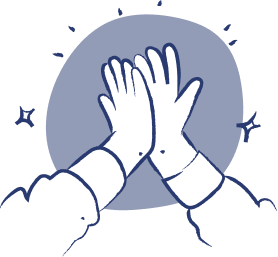Japanese encephalitis
If you need help, support or information about Japanese encephalitis, please get in touch with our support team
What is Japanese encephalitis (JE)?
JE is a type of infectious encephalitis caused by Japanese encephalitis virus (JEV). The virus is found in pigs and birds and is transmitted by Culex mosquitoes which breed in water pools and flooded rice fields which bite mainly during the night or just after sunset. The virus cannot be transmitted directly from person-to-person.
JE occurs mostly in South-East Asia and the Western Pacific islands with nearly three billion people living in at-risk areas and over 100,000 (68,000 according to World Health Organisation) estimated cases annually. JE is predominantly seen in children, however, some adults who have no prior immunity may be at risk. A vaccination programme is now in place in several affected countries however, it continues to cause a huge health and economic burden.
Symptoms of Japanese encephalitis
Most people who are infected have only mild or no symptoms, with only about 1 in 250 infections causing brain inflammation. The time from infection to developing symptoms is between 5-15 days. The illness can present with fever, chills, headache, muscle pain and spasm, movement disorders, seizures (particularly in children) and a reduction in the level of consciousness.
Diagnosis of Japanese encephalitis
The symptoms of Japanese encephalitis are not specific for this illness. People living/travelling in the endemic areas should be suspected and tested for JEV if they present with symptoms of encephalitis (fever, seizures, a change in consciousness level or neurological signs). Diagnosis can be confirmed, usually, by finding specific antibodies in the cerebrospinal fluid (CSF) following a lumbar puncture (LP or spinal tap) or in the blood.
Treatment of Japanese encephalitis
There is no specific antiviral treatment for Japanese encephalitis. The treatment is mostly symptomatic and supportive. In the severe cases, the treatment aims to manage seizures and raised intracranial pressure (due to brain inflammation) and support breathing.
Consequences of Japanese encephalitis
JE is a very serious illness. Estimates of death are very variable ranging from 5-50% and nearly half may be left with neurological, psychosocial, cognitive (intellectual) and/or physical disabilities.
Read this article for more information on patient experience and neurological complications of Japanese encephalitis .
Prevention
People can take precautions such as wearing mosquito repellent, wearing long sleeves and trousers to avoid being bitten and ensuring their homes and communities are free from stagnant water when mosquitoes gather and lay their eggs.
Safe and effective vaccines are available to prevent JE. The WHO recommends that JE vaccination be integrated into national immunization schedules in all areas where JE disease is recognized as a public health issue.
In addition, all travellers to areas where JE is endemic should seek travel health advice including the need for vaccination.
More information on prevention and guidelines for travellers is provided on our website.
WATCH: Chelsea talks about when she contracted Japanese Encephalitis
By Alina Ellerington, Encephalitis International and peer-reviewed by Dr Hannah Brindle and Dr Lance Turtle, University of Liverpool and Dr Ava Easton, Encephalitis International, UK
FS006V5 Japanese Encephalitis
Date created: March 2002/Last updated: March 2022/ Review date: October 2025
Disclaimer: We try to ensure that the information is easy to understand, accurate and up-to-date as possible. If you would like more information on the source material and references the author used to write this document please contact the Encephalitis International. None of the authors of the above document has declared any conflict of interest, which may arise from being named as an author of this document.
Found this helpful?
If you have found this information helpful, please consider making a donation to help us continue our life-saving work in the future. There are many different ways to make a donation, find out more below.
Donate
